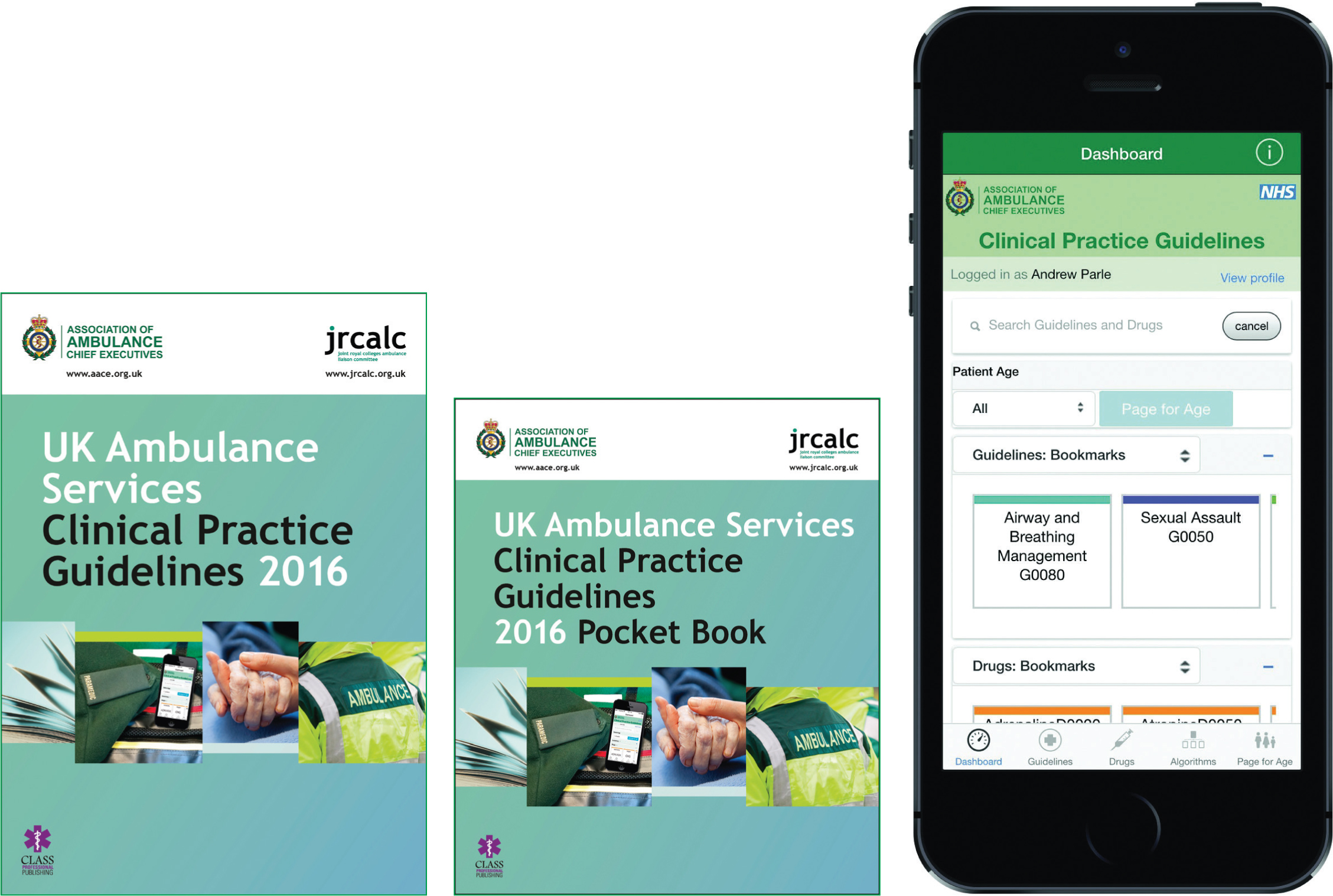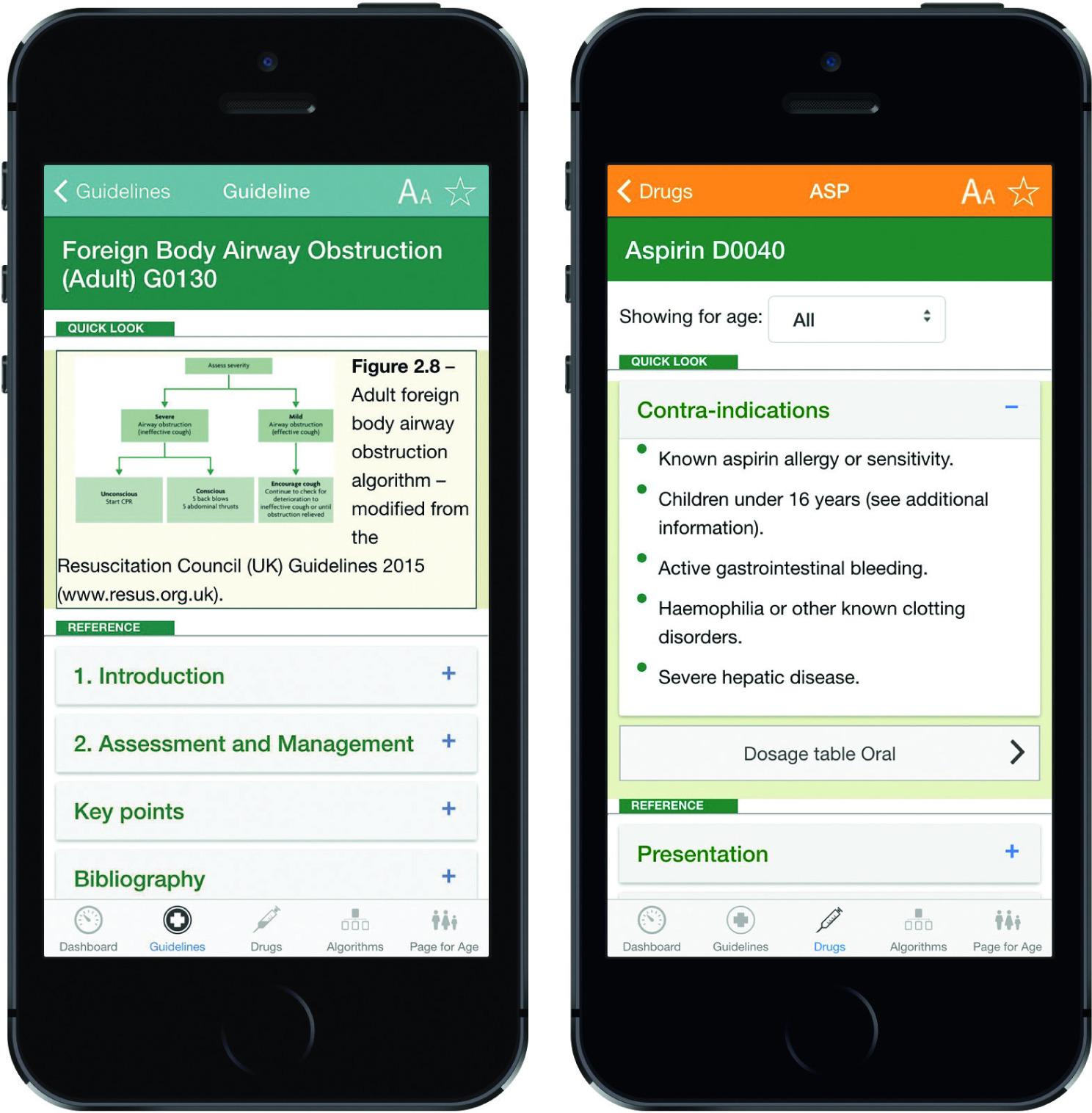March 2016 will see the release of the 2016 edition of the UK Ambulance Services Clinical Practice Guidelines, published by Class Professional Publishing for the Association of Ambulance Chief Executives (AACE) and the Joint Royal Colleges Ambulance Liaison Committee (JRCALC). The guidelines will be available in Reference Edition and Pocket Book format (both paper and digital) and as an interactive app, iCPG UK Ambulance Services.
The 2016 Clinical Practice Guidelines will build on the successful format of the 2013 edition. Many minor amendments and updates have been added throughout the text. New guidance has been developed on end-of-life-care, staff wellbeing and health, special circumstances in resuscitation and the Mental Capacity Act 2005. JRCALC have been pleased to recommend the use of midazolam, primarily to help treat convulsions, although its use with the ‘combative traumatic head-injured patient' to facilitate improved oxygenation is also recognised. A new guideline has been developed that outlines its safe use with the buccal route for children, and a choice of administration routes for adults.

Although new guidance on sepsis is much needed, it is not included in this edition as new International Sepsis Guidance, due to be published very soon (early Spring), will significantly influence and inform the next JRCALC recommended guideline. AACE intend to support JRCALC to develop new sepsis guidance as soon as possible and make it freely available as an addition to the 2016 publication.
The new guidelines on resuscitation have been updated to reflect the new guidelines from the Resuscitation Council (UK) that were published in October 2015. Professor Charles Deakin led on the drafting for JRCALC, and his experience of pre-hospital care ensures that guidance reflects international best practice and is specifically for ambulance clinicians.
Convulsions in children, head trauma and mental health have all been significantly revised for this edition, while other guidelines in the book have been subject to updates and corrections as required.
The development of new guidelines would not have been possible without the expertise and time that was generously given by many paramedic experts and clinical specialists. It is very pleasing to see the further development of ‘ambulance’ guidelines being undertaken by those who will also use them, on the front line.
Looking forward, it remains unclear which publishing medium will be the most popular over the next few years. AACE has worked with a variety of colleagues in this publication and we do not think ‘2016’ will be the last printed volume. However, we are very aware of the need to meet the varying needs of current practitioners. While commending the 2016 guidelines to you, in whichever format you choose to use, we will continue to work with our publishers and other experts to ensure paramedics and all ambulance clinicians can continue to access the best guidance, in a timely manner and in a format that suits them and the environment in which they are working.
The Chair of JRCALC has commented that these guidelines reflect the extended role of ambulance clinicians in today's NHS. The updated guidelines recognise changes in urgent and emergency care and a shift towards an increased proportion of initial assessments of urgent care patients being undertaken by ambulance clinicians. Going forward, JRCALC will look to further guide ambulance clinicians in safe decision-making regarding patient pathways and optimum care.

JRCALC has continued to grow under the AACE banner and has a new streamlined structure enabling continuing responsive, updated guidance to be produced in line with advances in practice and care. JRCALC's independent status remains valuable to the pre-hospital community in producing evidence-based best practice.
Choice of format
The UK Ambulance Services Clinical Practice Guidelines 2016 will be available in a number of formats, including a brand new interactive app, iCPG UK Ambulance Services.
Key features of the app are:
It will be available for Trusts to purchase for their members, or to individuals through Google Play and the iOS app store.
If you would like any further information on the 2016 edition, please contact Class Professional Publishing by emailing info@class.co.uk.

